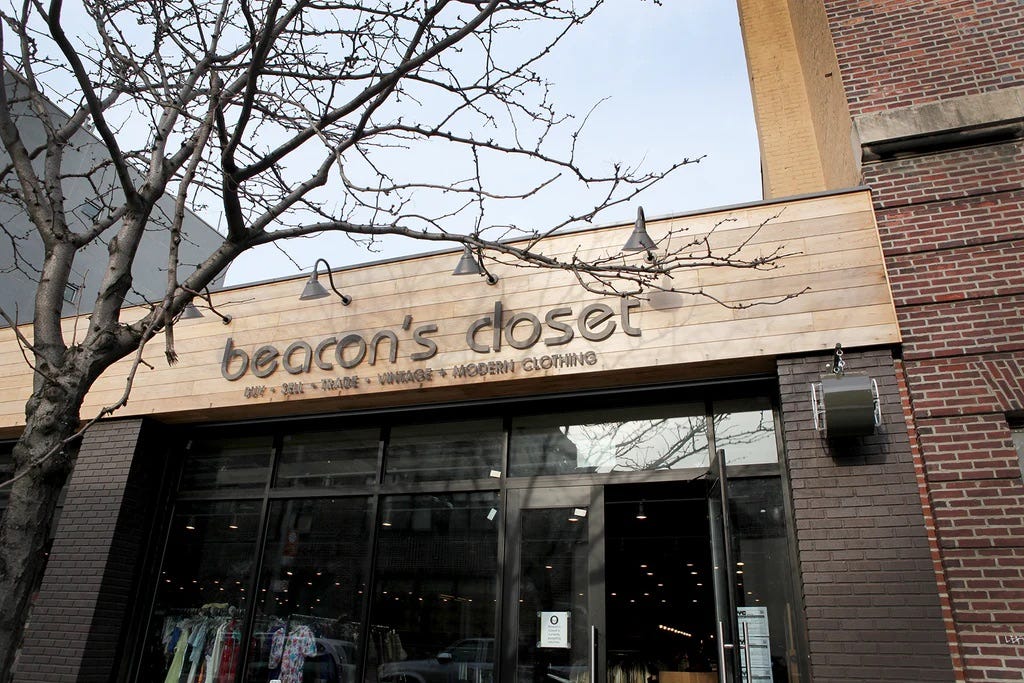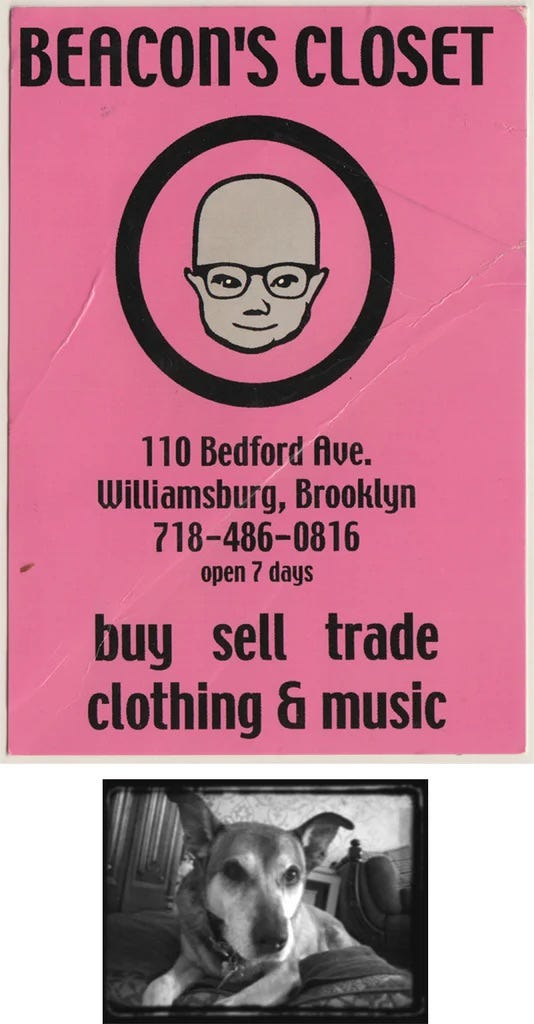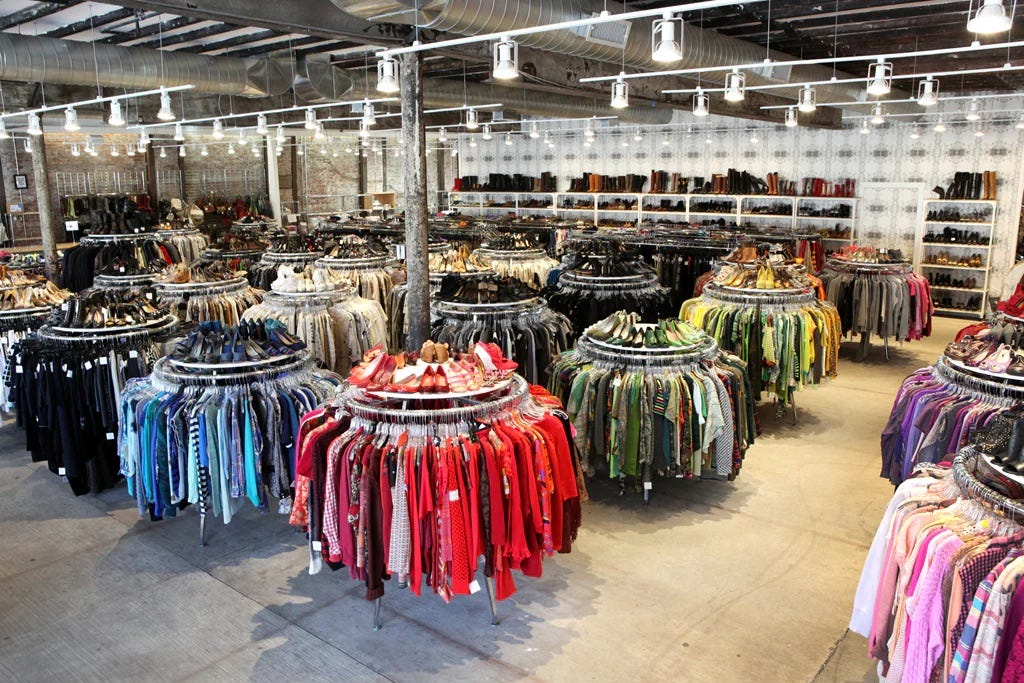How New York City’s Beacon’s Closet Came to Be
Few names are as synonymous with New York City’s secondhand scene as Beacon’s Closet.
Few names are as synonymous with New York City’s secondhand scene as Beacon’s Closet. For nearly three decades, the Brooklyn-born buy-sell-trade shop has become a destination for everyone from thrifting novices to style-savvy veterans. As part of my interview series on founders in the sustainable fashion space (Re.Vert Ventures), I sat down with Carrie Peterson, the founder behind the iconic shop, to talk about her journey, the evolution of resale, and the role secondhand fashion plays in a more sustainable future.
Youssef Elbehri: Carrie, thank you for joining me. Before we dive in, could you give us an overview of who you are and how you first got into secondhand retail?
Carrie Peterson: Thank you for having me. Honestly, I never knew exactly what I was going to do as an adult. I studied English literature in Tucson, Arizona, and while I was in college I worked at a secondhand clothing store. I thought I’d eventually move into something like journalism, but after graduation I ended up in New York with a string of low-paying, soul-crushing office jobs.
One day, I was waiting on the subway platform, overwhelmed by the crowd, and I just thought: I can’t do this. I left, went to Barnes & Noble in Union Square, and grabbed a few books on how to start a business. I didn’t buy them — I just took notes. I had no capital, so I pulled $15,000 from credit cards and opened a storefront, living in the back. My goal was simple: make $40 a day to cover rent and survive.
Y.E.: What drew you specifically to clothes and fashion?
C.P.: I’ve always loved fashion. In seventh grade, my friends and I would shop at Fashion Bug — cheap clothes, probably fast fashion before I even knew what that was. But thrift stores were always more exciting; the variety was endless, and you never knew what you’d find.
Fashion wasn’t something I thought would become my career, but when I was stuck in jobs I hated, I asked myself: What can I monetize in my life? Clothes felt like the answer. Plus, I had a friend who reminded me that the people running businesses in New York weren’t so different from me. That gave me the push I needed.
Y.E.: Let’s talk about Beacon’s Closet. When did it feel like this was more than just an experiment — that it could be financially viable? And who’s “Beacon” in the name?
C.P.: Honestly, I still sometimes think, This is the end. I’ve never felt completely secure. But the very first weekend we made more money than I’d ever seen in my life — it would’ve taken me a month of office work to earn what we made in three days. That was huge.
At first, I was the only employee and closed a couple of days a week. Then a friend pitched in part-time. After a year I moved out of the back of the store into an apartment upstairs. Slowly, it grew — but I still see it as a small operation, even after 27 years and four locations.
As for the name: I never thought I’d have children, so I considered the store my “baby.” If I ever had a child, I thought I’d name them Beacon — which, thankfully, never happened, but it worked perfectly for the shop. The logo came from a friend’s design — a baby wearing glasses, inspired by Junior’s Café napkin art. That baby became our icon.
Y.E.: Do you have a strict definition of thrifting versus consignment, or does it irk you when people misuse those terms?
C.P.: Not at all. Back when we started, I used to define it more carefully — thrift stores are usually run by nonprofits, while consignment means items sit until you get your price. I preferred the term thrifting because it’s a catchall, and it captures the fun and immediacy of the hunt. These days, whether people say secondhand, pre-loved, or vintage, I don’t get hung up on semantics.
Y.E.: Why did you decide to buy inventory directly from consumers instead of just thrifting items yourself?
C.P.: After our very first week, we sold out of everything I had thrifted. Buying from people was always part of the plan — it’s the model I knew from Tucson, and I knew it worked. Picking on my own was too time consuming, and I wanted the store open regular hours. By buying directly, we could keep the inventory curated — on-trend, classic, or high quality — while being transparent about pricing.
Y.E.: What do you think about big brands starting their own resale or take-back programs?
C.P.: It’s both competition and a good thing. At first it was scary, but I don’t think it’s the same as what we do — we offer variety. I’ve even shopped secondhand from certain brands I love. The more resale there is, the healthier the ecosystem. Of course, when a competitor opened on our block and underpaid their staff, that stung. But overall, I see resale expanding as a positive.
Y.E.: Have you noticed a decline in clothing quality over the years?
C.P.: I’ve always heard that, but I’m on the fence. There have always been cheap clothes, and sometimes a $60 pair of Levi’s lasts longer than a designer piece. The bigger issue is fabric — synthetic blends wear badly and can’t be recycled easily. The problem isn’t just fast fashion; it’s fabric, labor conditions, and sheer overproduction. There’s simply too much clothing in the world.
Y.E.: How has consumer perception of secondhand changed?
C.P.: It’s changed dramatically. Until the 2010s, many people would say, “Ew, no way.” Social media shifted that. Seeing stylish people wear thrifted pieces made it aspirational, and it broke down the stigma. Now people see what’s possible and are proud to shop secondhand.
Y.E.: What steps have you taken at Beacon’s Closet to reduce environmental impact?
C.P.: We switched from plastic to wood hangers, converted to LED lighting, and try to minimize waste across operations — electronic time cards, recycled paper, reusable bottles. Since we rent, we can’t make structural changes like green roofs, but we employ about 100 people, cover most of their health insurance, and work to create a workplace that’s socially sustainable too.
Y.E.: And what about consumers — what can they do differently?
C.P.: When buying new, check the tags. If it’s not sustainable, skip it or choose the better option. If you’re thrifting, buy whatever speaks to you. Small shifts matter, just like the environmental improvements we’ve seen over decades. Consumers create demand — and that’s what drives change.
Author’s Note: This is a snippet of our interview. Watch the full interview here with Re.Vert Ventures here or listen to it here. Beacon’s closet has four locations across New York City – find them here.
About the Author: Youssef Elbehri is host and founder of Re.Vert Ventures – an interview series dedicated to founders in the sustainable fashion space.







